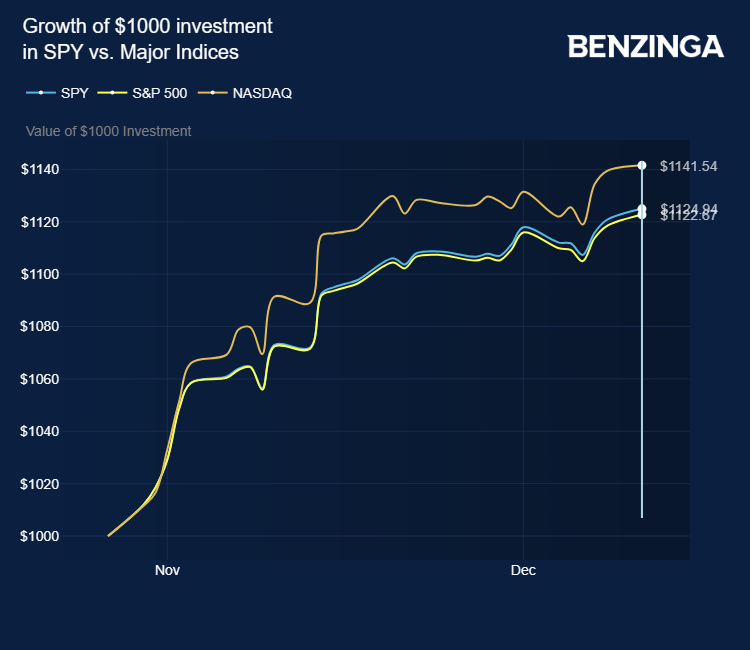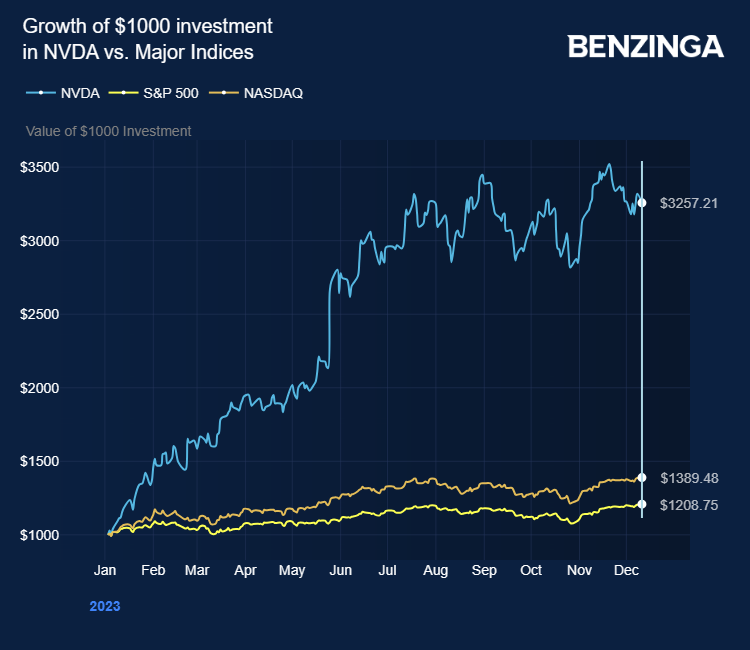Equity markets have had a volatile ride in 2023, moving in tune to action from the Federal Reserve on interest rates until, in the last couple of months of the year, where investors have welcomed “risk-on” trades with open arms.
The S&P 500 is within 4% of its January 2022 record high, while the exchange traded fund that tracks the index, the SPDR S&P 500 SPY has rallied by nearly 21% over the year, with a 12.5% gain since October 27. Amid the tech-driven gains, the NASDAQ index has surpassed them all.

But risks remain, and Bank of America — in its Global Equity Volatility Insights paper — published on Tuesday, has some warnings and some tips to to avoid getting caught in any market hype as we move into the New Year.
FOMO
Fear of missing out, or FOMO, has driven equity trade in the past six weeks, with the so-called “Fed put” — positioning on expectations of rate cuts in 2024 — and “buy-the-dip” strategies dominating.
BofA explained that U.S. equities experienced larger shocks to the upside than to the downside in 2023. As an example, the S&P 500’s positive return in the week of the November Fed meeting was larger than any five-day return experienced this year.

“Going into 2024 we are concerned about the two-sided risk of FOMO-driven price action decoupling from challenging macro fundamentals,” said the BofA analysts.
Also Read: Nasdaq, S&P 500 Futures Rise Ahead Of Inflation Data
Bubbles Beginning To Form?
Mag7 Valuations: The rise in interest rates during the first seven months of 2023 should have punished growth stocks, yet technology — and especially artificial intelligence (AI) themes — have been the major winners in 2023, according to the BofA research.
So is the tech sector, and what is now becoming known as the Mag7 stocks, entering bubble territory? Let’s take a closer look at how those Mag7 stocks have performed over the year:
- Meta Platforms META is up 170% year to date
- Apple AAPL is up 49%
- Amazon AMZN is up 74%
- Alphabet GOOGL is up 51%
- Microsoft MSFT is up 55%
- Nvidia NVDA is up 219%
- Tesla TLSA is up 95%

“Asset bubbles exist not because investors can’t identify them, but because of their inability to time their end,” said BofA.
Using current price/earnings ratios, and comparing them to the P/Es during the 1990s tech bubble, BofA suggests each Mag7 stock would have to rise by 55% for the group to reach half the peak valuation of the largest seven tech stocks of the 1990s bubble.
“This highlights the large upside risk to equities that can result from the Mag7 stocks alone.”
Don’t Get Caught Out On The Fed Put
BofA said the rates market were not only caught out by the speed and magnitude of Fed hiking in the 2022, they also underestimated the amount of further tightening by the central bank in 2023. They have now also repeatedly pushed back the expected timing of the first cut.
Rates markets are now pricing in four 25 basis point rate cuts for 2024 — “a just-right amount of policy easing that has contributed to a strong risk rally this quarter so far.”
“However, given the rates market’s poor forecasting record over the course of this policy cycle, we suggest taking their expectations of a goldilocks economy and easier monetary policy with a pinch of salt,” BofA said.
Bottom Line: Alan Greenspan famously called the behavior behind the 1990s stock market bubble “irrational exuberance”.
The BofA analysts are not warning 2024 could be hiding another market crash, but saying that some of the behaviors — heavy investment in tech stocks, risk-on despite rising economic headwinds, second-guessing Fed policy, bandwagon-style follow-the-crowd trading bias — are suggestive of that era.
Now Read: Federal Reserve Meets Wednesday: Will Powell Signal Rate Cuts In 2024?
Edge Rankings
Price Trend
© 2025 Benzinga.com. Benzinga does not provide investment advice. All rights reserved.
Trade confidently with insights and alerts from analyst ratings, free reports and breaking news that affects the stocks you care about.